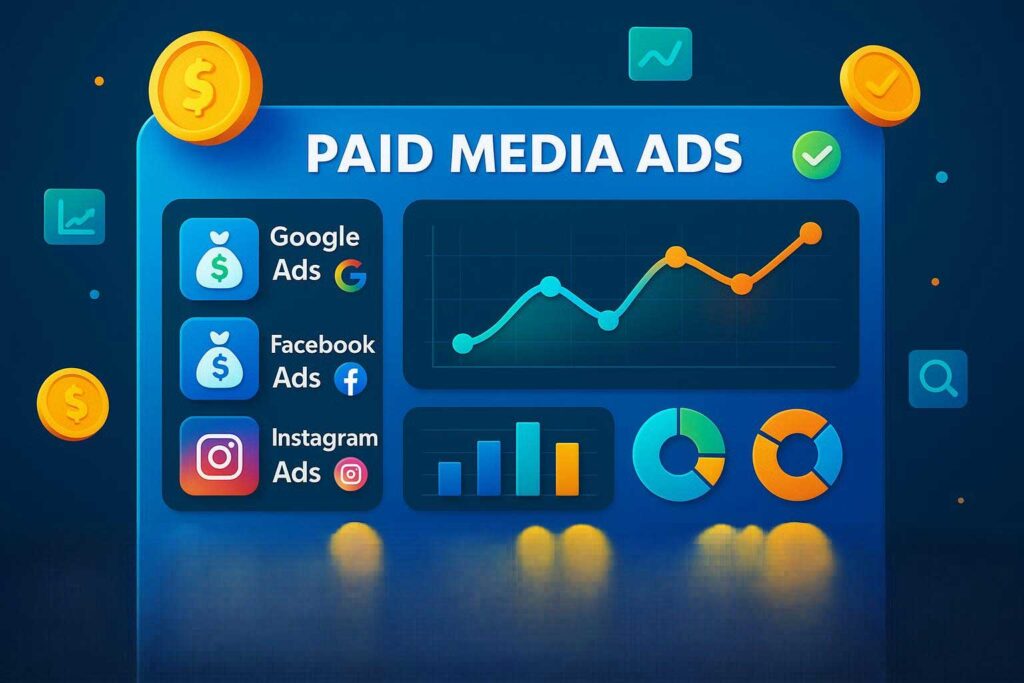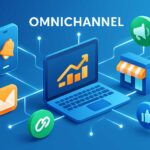What Is Paid Media? A Complete Guide (2026 Edition)
In the ever-evolving world of digital marketing, brands compete for visibility, clicks, and conversions.
One of the most powerful ways to reach your audience instantly is through paid media.
Whether you’re running Google Ads, Facebook campaigns, influencer promotions, or sponsored posts, paid media ensures your brand gets in front of the right audience at the right time.
Let’s explore what paid media is, its types, strategies, examples, and how you can leverage it alongside SEO to dominate your digital presence.
Paid Media Definition: What Does It Mean?
Paid media refers to any marketing effort where you pay to promote your brand, products, or services on digital platforms.
This includes:
- Search ads (Google Ads, Bing Ads)
- Social media ads (Facebook, Instagram, LinkedIn, TikTok)
- Display banners and retargeting ads
- Influencer collaborations
- Sponsored content and partnerships
In simple terms, paid media = paying for exposure to drive traffic, leads, and sales.
👉 Try our Free Keyword Research Tool to find high-performing keywords for your paid campaigns.
Why Paid Media Is Important for Digital Marketing
Paid media accelerates brand growth by delivering instant visibility and measurable results.
Here’s why it’s crucial for every marketer in 2026:
✅ 1. Instant Results
Unlike organic SEO, paid media campaigns can generate clicks and conversions within hours of launch.
✅ 2. Precision Targeting
You can target users by location, interests, behavior, and demographics for maximum ROI.
✅ 3. Scalable & Measurable
Platforms like Google Ads and Meta Ads offer detailed analytics, allowing you to track every impression and conversion.
✅ 4. Complements SEO & Content Marketing
While SEO builds long-term authority, paid media amplifies reach immediately — a perfect mix for full-funnel marketing.
🔸 Paid vs. Owned vs. Earned Media: Understanding the Difference
| Type | Description | Example |
|---|---|---|
| Paid Media | Advertising that you pay for | Google Ads, Facebook Ads |
| Owned Media | Channels you control | Website, Blog, Email List |
| Earned Media | Organic mentions & shares | Press coverage, backlinks, reviews |
💡 Pro Tip:
Use Free Backlink Checker to track your earned media SEO growth and identify high-authority links.
Types of Paid Media (With Real Examples)
1️⃣ Search Engine Advertising (PPC Ads)
Pay-Per-Click (PPC) ads appear at the top of Google or Bing results for target keywords.
Example:
When you search “best SEO tools,” paid ads appear before organic results.
➡ Use Google Keyword Planner alternatives on small-seo-tool.com to find profitable keywords for your campaigns.
2️⃣ Social Media Advertising
Platforms like Facebook, Instagram, LinkedIn, TikTok, and Twitter/X allow you to promote posts or run targeted ad campaigns.
Example:
A clothing brand runs a Facebook ad showing users personalized products based on browsing behavior.
3️⃣ Display & Retargeting Ads
These visual banner ads appear on websites your audience visits. Retargeting ensures users who’ve visited your site see reminders later.
Example:
You look at sneakers on Nike’s website and later see Nike ads while reading a blog — that’s retargeting.
4️⃣ Influencer Marketing
Collaborate with influencers or content creators to promote your products authentically.
Example:
A skincare brand pays a beauty influencer to review their product on YouTube or Instagram.
5️⃣ Sponsored Content
Brands pay to feature articles, videos, or posts on popular websites or media outlets.
Example:
A digital agency publishes a sponsored article on Forbes about “Top SEO Trends for 2026.”

How Paid Media Works (Step-by-Step Process)
Step 1️⃣: Define Goals
Set clear objectives — traffic, leads, conversions, or brand awareness.
Step 2️⃣: Choose the Platform
Pick the best channels based on your audience — Google, Facebook, YouTube, LinkedIn, or TikTok.
Step 3️⃣: Conduct Keyword & Audience Research
Find relevant search terms and user interests with the SEO Keyword Tool.
Step 4️⃣: Set Budget & Bidding Strategy
Decide on CPC, CPM, or CPA models based on your campaign goals.
Step 5️⃣: Create Engaging Ad Copy & Visuals
Use power keywords like free, exclusive, limited-time, and best results to boost click-through rates.
Step 6️⃣: Track & Optimize
Monitor results with analytics and A/B test ads for continuous improvement.
Paid Media Examples That Drive Results
| Brand | Campaign Type | Key Takeaway |
|---|---|---|
| Coca-Cola | YouTube Ads | Emotional storytelling drives engagement |
| Airbnb | Google PPC | Keyword targeting + visuals = high CTR |
| Shopify | Facebook Ads | Retargeting users increases conversions |
| Nike | Influencer Collabs | Human connection amplifies reach |
paid media, paid media definition, types of paid media, paid vs owned vs earned media, paid advertising examples, digital marketing strategy, PPC advertising, social media ads, display ads, influencer marketing
Paid Media Strategy Tips for 2026
✅ Use AI tools to automate bidding and targeting
✅ Focus on video ads — short-form video dominates engagement
✅ Combine SEO + Paid for consistent growth
✅ Use retargeting to bring back lost visitors
✅ Test creatives monthly to avoid “ad fatigue”
👉 Try our Free Website Traffic Analyzer to measure performance improvements.
Example: How a Small Business Can Use Paid Media
Let’s say you run a local coffee shop.
Here’s how you could use paid media:
- Google Ads: Target “best coffee near me.”
- Instagram Ads: Show visuals of latte art & ambiance.
- Retargeting Ads: Remind previous website visitors of loyalty discounts.
Combine these with SEO-optimized content from small-seo-tool.com, and you’ll create a consistent brand experience that drives traffic and sales.
Paid Media vs SEO: Which Is Better?
| Aspect | Paid Media | SEO |
|---|---|---|
| Speed | Instant results | Long-term growth |
| Cost | Continuous spend | More affordable over time |
| ROI | Immediate but short-term | Compounds with consistency |
| Best For | Quick exposure, launches | Sustainable visibility |
💡 Pro Tip: Combine both! Use paid media for traffic spikes and SEO for long-term authority.
👉 Start with our Free SEO Audit Tool to align both strategies.
FAQs About Paid Media
Q1: What are examples of paid media?
Google Ads, Facebook Ads, influencer partnerships, and sponsored blog posts are all forms of paid media.
Q2: How is paid media different from organic marketing?
Paid media involves direct payment for exposure, while organic relies on content and SEO.
Q3: What is the best platform for paid media?
It depends on your audience — Google for intent-based searches, Facebook/Instagram for engagement, and LinkedIn for B2B.
Q4: Is paid media expensive?
It can be, but smart bidding and targeted campaigns help you maximize ROI.
Q5: Can paid media improve SEO?
Yes. It drives traffic, brand mentions, and engagement, all of which positively impact SEO performance.
Final Thoughts: Paid Media Is Your Fast Track to Growth
In 2026, paid media isn’t optional — it’s essential.
It helps brands stand out in crowded digital spaces, build awareness, and drive measurable results.
By combining paid campaigns with SEO, content marketing, and analytics tools from small-seo-tool.com, you can create a powerful full-funnel marketing strategy that captures attention and converts customers.
Start optimizing your ads, target smarter, and let paid media work hand-in-hand with SEO for unbeatable online success.


